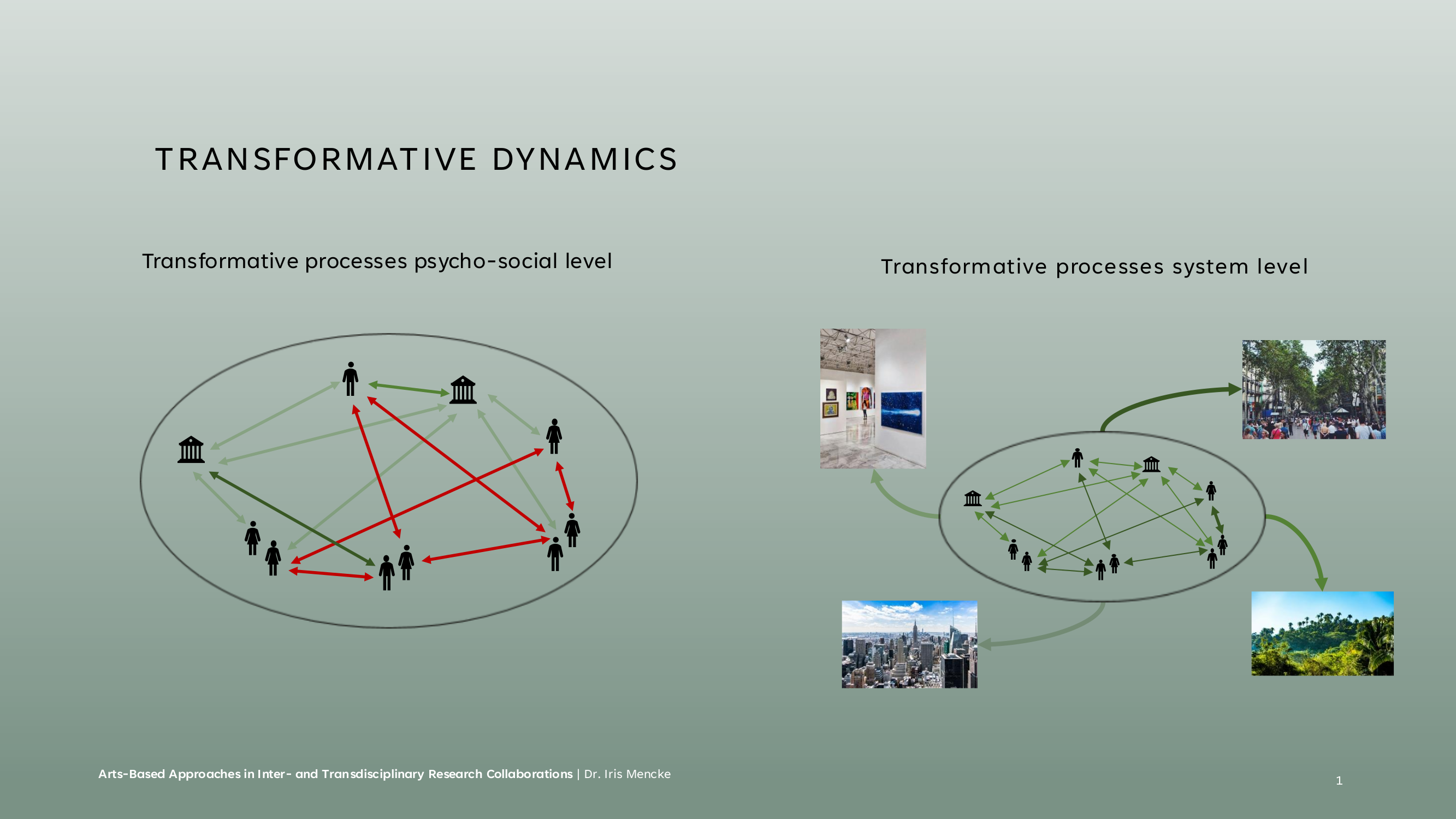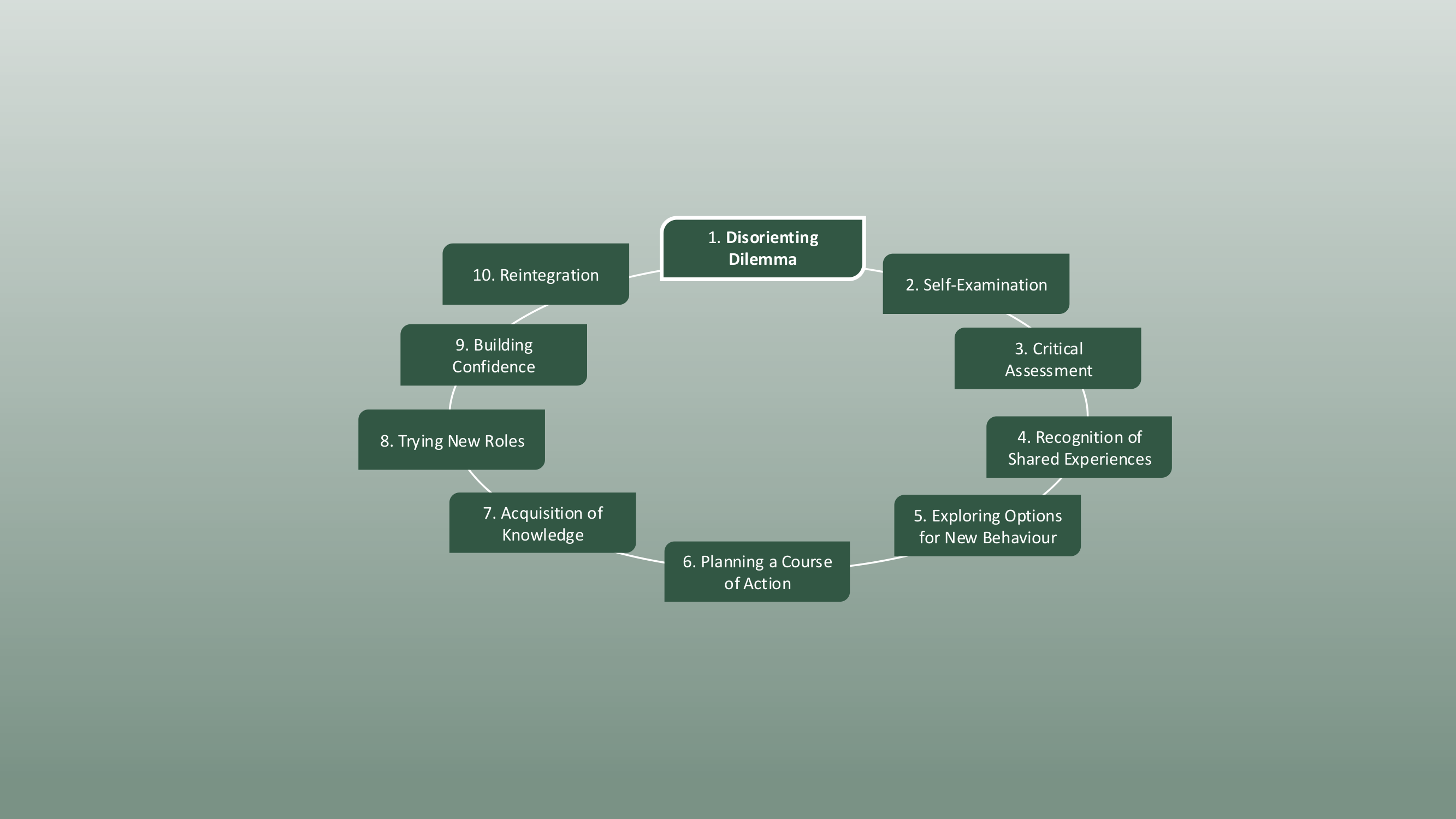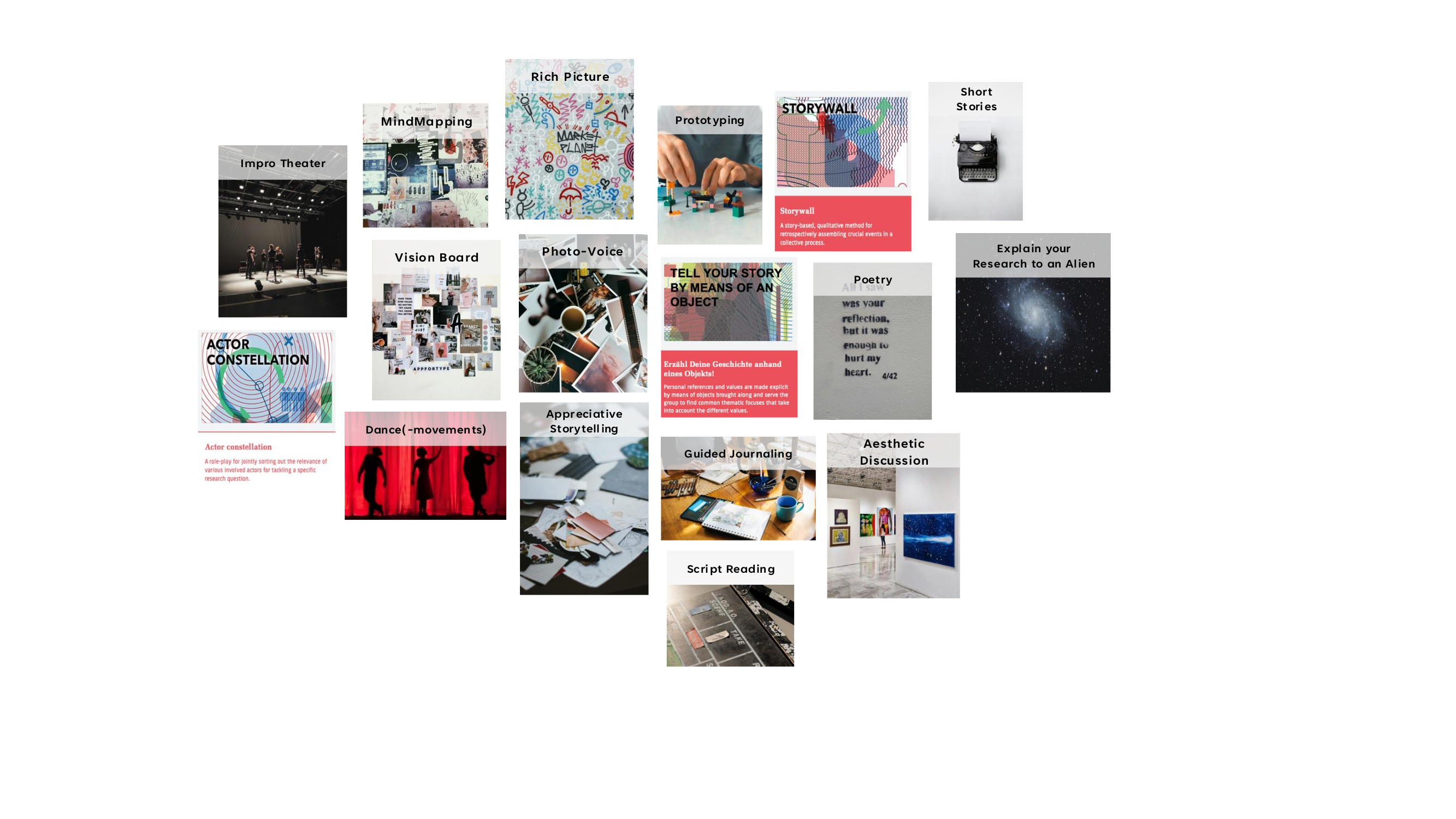My motivation to work with arts-based approaches in research comes from the belief that creative, sensory, and emotional ways of knowing are essential for understanding complex societal challenges and enabling meaningful transformation. I see great potential in methods that engage people beyond rational argument—by involving their experiences, imaginations, and emotions. Arts-based approaches allow for deeper participation, bring in diverse voices, and help surface knowledge that often remains invisible in traditional research settings. To address today’s pressing issues, I believe we need more inclusive, creative, and empathetic forms of collaboration.
The project that I conducted in collaboration with the Institute for social-ecological research (ISOE, Frankfurt/Main, DE) and the Öko-Institut e.V. Institute for Applied Ecology (Freiburg) was dedicated to exploring the transformative potential of arts-based approaches within inter- and transdisciplinary (ITD) research collaborations. On the one hand, I aimed to study which arts-based methods are currently being used by the ITD community and which have already been systematically documented or described. On the other hand, I aimed to gain a better understanding of how arts-based methods do have a transformative impact. All in all, in the very short time of two months I had the opportunity to dive into an exciting new research area that clearly deserves more attention.
Arts-based methods
Arts-based research uses creative methods from areas like visual arts, literature, music, and performance to explore research questions beyond purely rational approaches. By including experiential knowledge, it broadens understanding and fosters new insights. These approaches are well-suited to build connections across disciplines with different ways of knowing and working (Klein, 2021; Leavy, 2017).
They also facilitate inclusion by enabling participation from a broad range of actors, including those typically excluded from academic discourse. They create emotional and intellectual access to complex or marginalized perspectives and can also challenge dominant ideologies and make space for new, more empathetic understandings. Additionally, they are capable of connecting diverse voices and by evoking immediate, affective responses, they open up transformative pathways for inclusive public scholarship (Leavy, 2017).
Looking at the psychological level, the use of artistic approaches can promote cognitive and social skills such as creativity, imagination, reflexivity, and empathy—abilities that are crucial for addressing complex and wicked problems and are highly demanded to address future grand challenges (Sandberg, 2023). Not least, arts-based methods are characterized by their capacity to leave room for ambiguity, ambivalence, or contradictions, rather than forcing them into a coherent logical or even dialectical system (Kagan, 2015).
Transformative Learning & Artistic Creation
Trying to assess—and even explain—how the arts create transformative impact led me into challenging territory. Where exactly does this transformative potential lie? Which aspects of art or artistic creation lead to which kinds of change? With my background in psychology, I’m especially interested in transformations on the personal and psycho-social level. I want to better understand how the arts influence and transform our perception, behavior, and attitudes—and ultimately, how they shape the way we act or make decisions.

Fig. 1. Different levels of transformative dynamics and processes.
To explore how arts-based approaches create impact, I draw on the theory of transformative learning. Developed by Jack Mezirow in the 1970s, this concept describes deep changes in attitudes, mindsets, and meaning-making—not just gradual learning (Mezirow, 1978). The process typically includes disorienting experiences, reflection, social exchange, and behavioral change, though not always in a fixed order. For learning to be truly transformative, it should lead to lasting, meaningful change across different contexts (Grund et al., 2024). Interestingly, transformative approaches are gaining new relevance. In the context of future skills, transformative pedagogy is receiving growing attention and plays an increasingly important role in sustainability research (Singer-Brodowski, 2023).

Fig. 2. Phases of transformative learning according to Mezirow (2000)
Arts-based approaches are ideal to foster transformative processes (see for instance: Blackburn Miller, 2020; Hoggan et al., 2009). They can accompany different phases of the cycle of transformative learning, (Fig. 2; Mezirow, 2000) such as phases related to reflection, shared experience, or imaginative exploration.
- Reflection (particularly phases 2 and 3 of the transformative learning process) could be supported through methods such as journaling or photovoice, which encourage personal insight and critical self-examination.
- Social exchange (phase 4) could be facilitated through dialogical methods such as (visual) story telling that allow the recognition of shared experiences.
- Behavioral change (phases 5–8), including exploring new roles and building confidence, can be effectively supported by imaginative and embodied arts-based approaches that enable experimentation, emotional engagement, and the rehearsal of alternative ways of being.
Current and Ongoing Work and Next Steps
As part of my fellowship project, I analyzed which arts-based methods are used and systematically described within the ITD research community. To do this, I used the Toolkit Collection developed by the "Toolkits & Methods" Working Group of the ITD Alliance (Robson-Williams & ITD Alliance Working Group on Toolkits and Methods, 2023) as a starting point to identify methods connected to artistic practice. This includes resources such as the td-net toolbox, the TransImpact Toolbox, and the SHAPE-ID platform. One recommendation I would like to highlight is the Arts-based Methods for Transformative Engagement: A Toolkit, which exclusively focuses on arts-based methods.

Fig. 3. Exemplary Selection of Arts-based methods from the analysis during my fellowship.
Since I discovered a few additional toolkits while reviewing all 27 listed in the collection, this work is still ongoing. As I worked through the arts-based methods for my compilation, I began tagging each one to lay the groundwork for a database—a practical collection of methods. If you're curious about this or the emerging typology of arts-based approaches in ITD research, feel free to reach out. And if anything becomes publishable along the way, I’ll share updates on my website.
Dr. Iris Mencke
Interdisciplinary Minds
Bad Vilbel, DE
Phone.: +49 (0) 176 – 594 345 16
www.iris-mencke.de
iris.mencke[at]gmail.com
info[at]interdisciplinary-minds.de
Literatur
Blackburn Miller, J. (2020). Transformative Learning and the Arts: A Literature Review. Journal of Transformative Education, 18(4), 338–355. https://doi.org/10.1177/1541344620932877
Grund, J., Singer-Brodowski, M., & Büssing, A. G. (2024). Emotions and transformative learning for sustainability: A systematic review. Sustainability Science, 19(1), 307–324. https://doi.org/10.1007/s11625-023-01439-5
Hoggan, C., Simpson, S., & Stuckey, H. (Hrsg.). (2009). Creative expression in transformative learning. Tools and techniques for educators of adults. Original ed. Krieger.
Kagan, S. (2015). Artistic research and climate science: Transdisciplinary learning and spaces of possibilities. Journal of Science Communication, 14(01), C07. https://doi.org/10.22323/2.14010307
Klein, J. T. (2021). Beyond interdisciplinarity: Boundary work, communication, and collaboration. Oxford University Press. https://doi.org/10.1093/oso/9780197571149.001.0001
Leavy, P. (2017). Handbook of Arts-Based Research.
Mezirow, J. (1978). Perspective Transformation. Adult Education, 28(2), 83–135.
Mezirow, J. (2000). Learning as transformation. Critical perspectives on a theory in progress. 1. Ed. Jossey-Bass.
Robson-Williams, melissa & ITD Alliance Working Group on Toolkits and Methods. (2023). A landscape of toolkits for Inter- and Transdisciplinary Research. https://doi.org/10.5281/ZENODO.10020001
Sandberg, D. B. (2023). Mit Kunst zu Future Skills—Wie kunstbasiertes Lehren und Lernen wirkt. Career Service Papers, 20, 17–29.
Singer-Brodowski, M. (2023). The potential of transformative learning for sustainability transitions: Moving beyond formal learning environments. Environment, Development and Sustainability. https://doi.org/10.1007/s10668-022-02444-x
Picture credits
Selection of Arts-based methods:
barna-kovacs-HTs7o4cWWsY-unsplash
florian-klauer-mk7D-4UCfmg-unsplash
hamish-kale-oj0gsj-Zt_w-unsplash
harald-muller-ACAJGonG8rA-unsplash
mary-grace-hudson-5dqj8bc_ZAg-unsplash
kyle-head-p6rNTdAPbuk-unsplash
pexels-yihan-wang-2148192610-30327371
pure-julia-a4mu_xn3gOg-unsplash
raven-cain-lZ31WcpEGng-unsplash
sebastien-bonneval-1AEx2Voy8cI-unsplash
sunguk-kim-o9RLeUVowG8-unsplash
Transformative Dynamics:
pexels-andrejcook-396714
pexels-lkloeppel-466685
pexels-pashal-106052
pexels-prismattco-2372982
